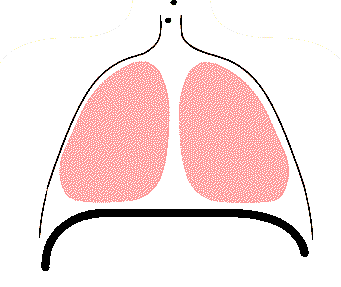Note that your final mark will not be saved in the system.
C1–C2 Structure and Function Typeit
Type the correct answers into the spaces. Fill all the spaces before clicking ‘Check Answers!’

Breathing is split into two major components – inspiration (drawing air into the lungs) and expiration (expelling air into the atmosphere). When breathing in at rest, the intercostal muscles and diaphragm , whereby the latter moves down and . This forces the ribs upwards and , which the volume of the thoracic cavity. This, in turn, the pressure in the lungs, forcing air to move into the lungs from the atmosphere. During exercise, the respiratory muscles contract with greater force and are assisted by skeletal muscles such as the pectoralis minor.
Gaseous exchange occurs down a concentration gradient, whereby the high concentration of oxygen in the moves into the surrounding , where the concentration of oxygen is lower. At the same time, the higher concentration of produced by the muscles moves in the opposite direction and is expelled from the lungs into the atmosphere.
During expiration, the diaphragm and assumes a shape. This forces the ribs downwards and , which the volume of the thoracic cavity. The pressure inside the lungs as a result and forces air out into the atmosphere. During exercise, the intercostal muscles assist with increasing the movement of the ribs and forcing more air out of the lungs.